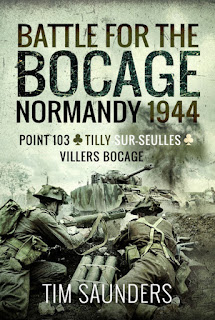The Waffen-SS Ardennes Offensive written by Ian Baxter and published by Pen &Sword Books - £14.99 - Softcover - Pages 128
In late 1944 under extreme pressure on both the Eastern and Western fronts, Hitler
realized he needed to force the Allies into negotiating a truce thereby saving Germany
from total defeat. Using the Christmas period to enhance the vital element of surprise,
he ordered a devastating attack through the rugged and mountainous Ardenne region
with the key Allied port of Antwerp as the objective.
This book, with its extensive text and rare and unpublished photographs with detailed captions, tells the story of the Waffen-SS offensive, known as Wacht am Rhein (Watch on the Rhine). These formidable SS armoured units with supporting Wehrmacht divisions initially achieved dramatic success making full use of the harsh winter conditions and terrain. Gradually the Allies regained the upper hand on the attackers who were increasingly suffering from lack of reinforcements and resupplies. After defeat at the pivotal battle of Bastonge, remaining Waffen-SS units withdrew and were transferred back to the Eastern Front. As described in this classic Images of War book, the Fuhrer’s gamble so nearly paid off and the ruthless fighting spirit of the elite Waffen-SS divisions caused the Allied command serious concern.
Another fascinating and informative book from the Images of War series of books. As the war was heading towards a conclusion at last, this was one of Hitler’s last rolls of the dice in which his Waffen-SS would go out and support troops and divisions in the Ardennes area and in a way this would become helpful but it wasn’t long before the allies were able to take the upper hand in control. The main problem for Germany was that they were running short on manpower and munitions leading to a number of key successes like Bastonge. This is all told through the series of rare photographs and supportive text, the ways these photos are taken are always excellent along with the quality of the pictures too. Which does make the Images of War series excellent and certainly one I would happily recommend to anyone.











.jpg)






.jpg)
.jpg)